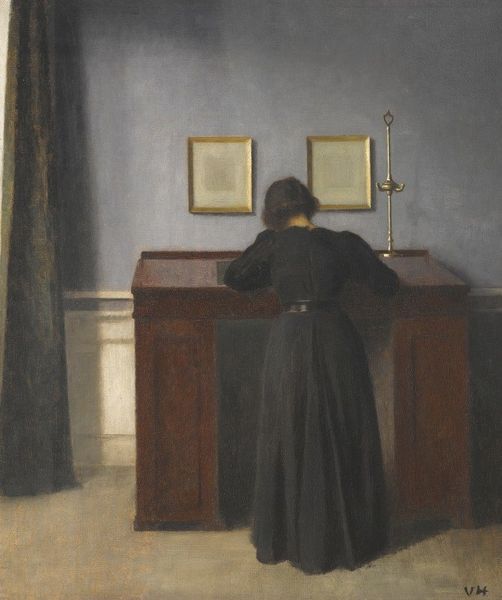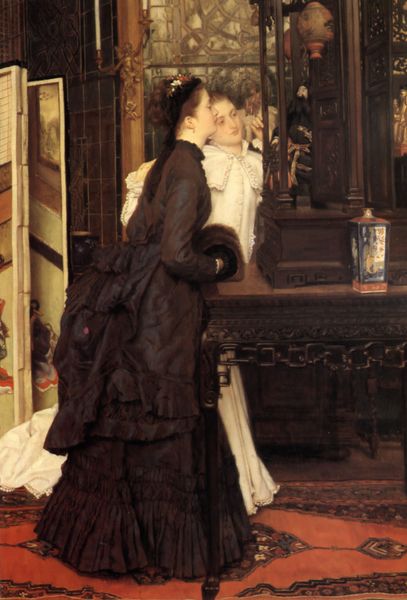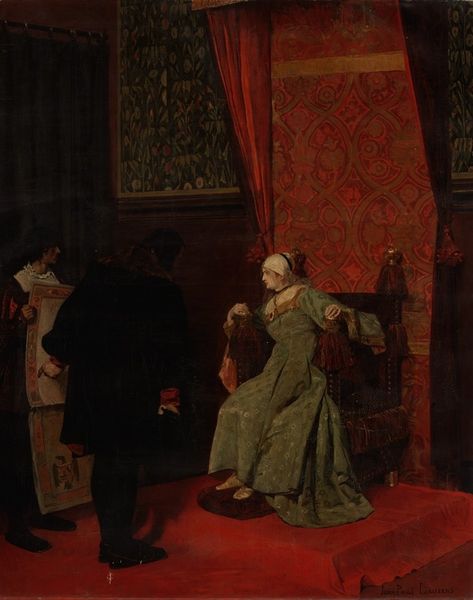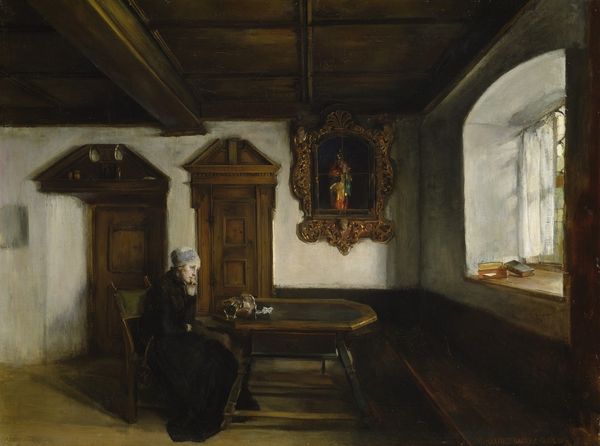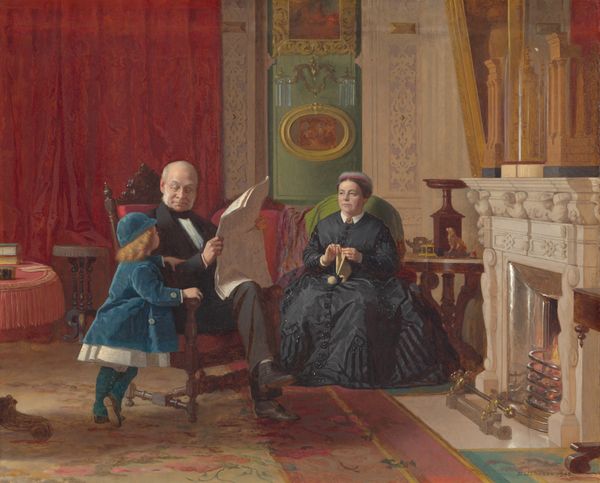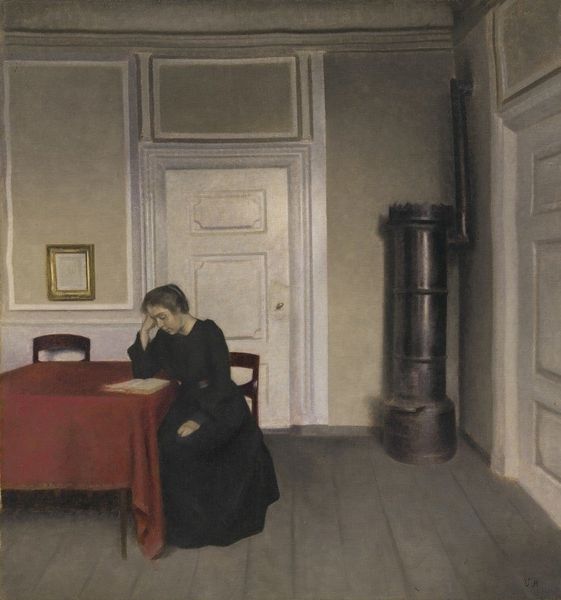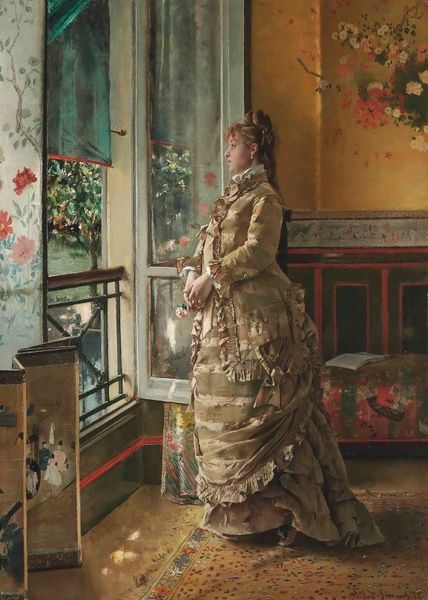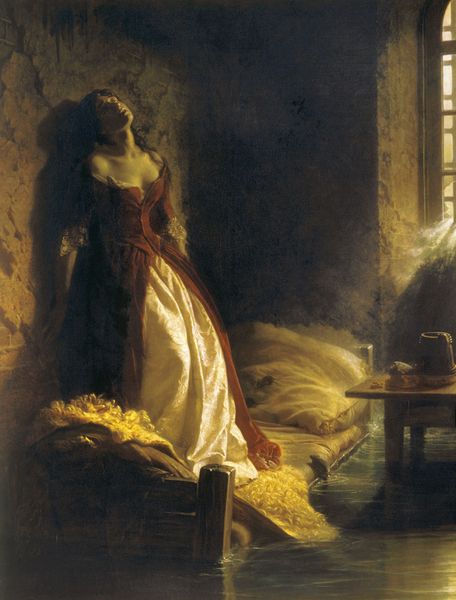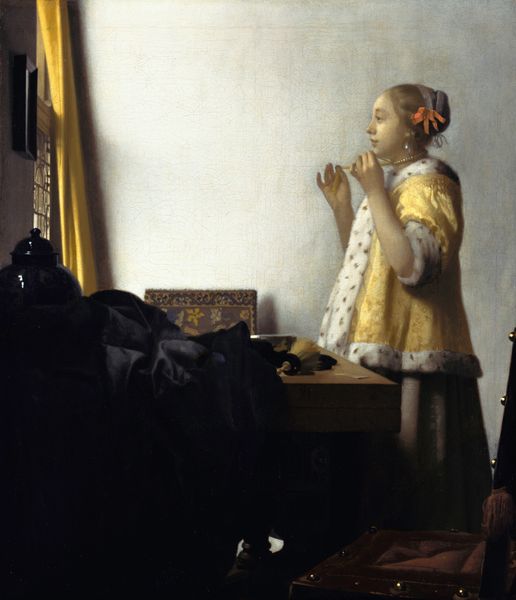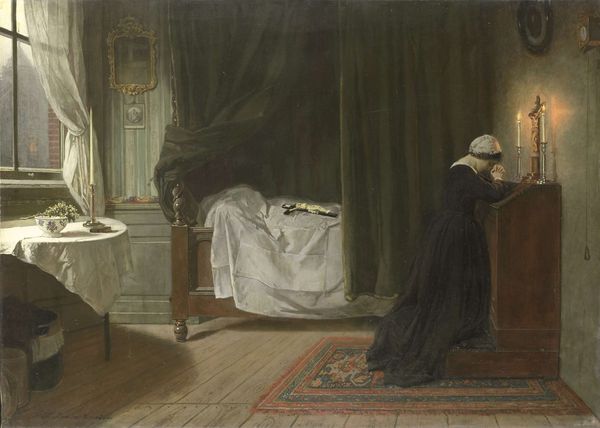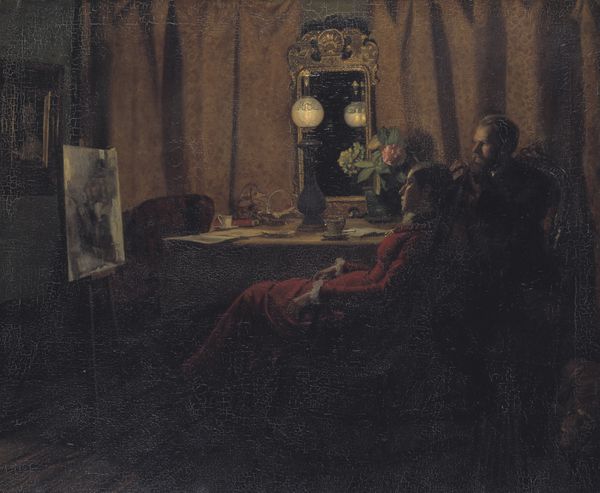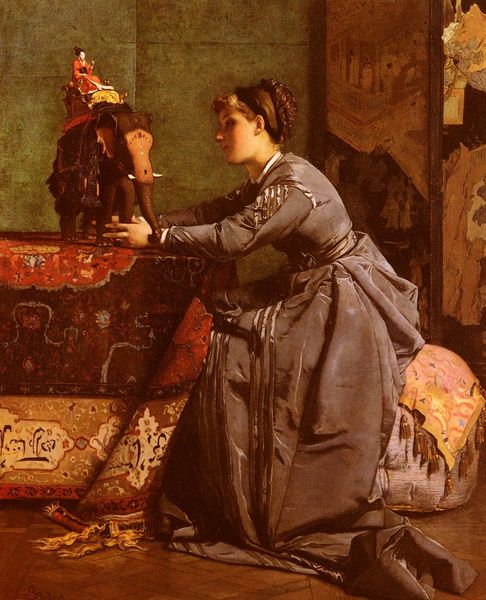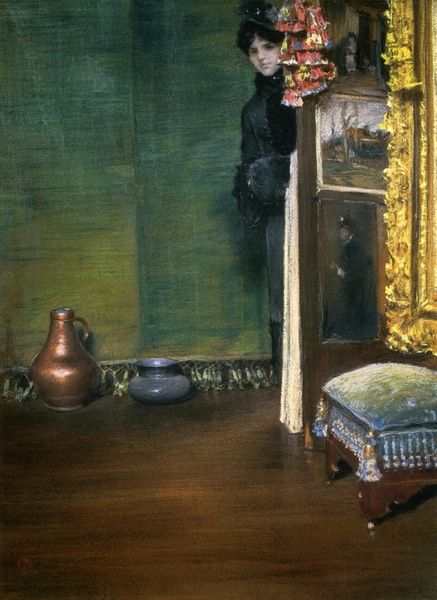
#
cosplay
#
impressionist painting style
#
possibly oil pastel
#
derelict
#
underpainting
#
painting painterly
#
watercolour bleed
#
mixed media
#
watercolor
#
warm toned green
Dimensions: overall: 66.5 × 56.2 cm (26 3/16 × 22 1/8 in.) framed: 100.33 × 90.81 × 10.16 cm (39 1/2 × 35 3/4 × 4 in.)
Copyright: National Gallery of Art: CC0 1.0
Curator: Eastman Johnson’s “The Toilet,” painted in 1873, captures a woman at her dressing table. It’s suffused with this quiet, almost melancholy light. Editor: My first thought? The materials themselves speak so loudly. The soft watercolor bleed and the painterly strokes… it’s almost a whisper of intimacy. The material seems frail and sensitive, not imposing. Curator: Absolutely, it's as if the artist wants us to feel like we’ve stumbled into a private moment. I think it’s brilliant that the reflected image in the mirror is the same woman in front of us! Are we watching her, or is she watching us? Editor: Right! That mirror presents some unique materiality in representation too! Looking at this more, I see how Johnson’s process, using mixed media with watercolor, shifts our understanding of "high art." A material usually relegated to minor works creates this quiet, important moment. It begs us to question established artistic boundaries. Curator: That play of light and shadow adds another layer, doesn't it? See how her figure almost merges with her dark robe, then flows over and past the floor... The wallpaper is fighting back to hold its space within the reflection in the mirror too! What do you make of the objects on the vanity, scattered like jewels, between woman and mirrored-woman? Editor: I am looking specifically at this vanity, yes. Those objects reveal production methods that directly address ideas of luxury, aspiration and…dare I say, a social critique about bourgeois consumption? The mirror presents another version of these objects again! Do these doubled images mean doubled work, production or consumption in some way? Curator: I see your point about material context, but to me, it's about the subtle power of reflection itself. She is pondering life or is she is pondering adornment? The answer could depend on the light, which gives "The Toilet" the magic, subtle light, doesn't it? Editor: I appreciate that this artist shows how materiality of watercolor is uniquely able to capture these elements. "The Toilet" makes me rethink ideas about technique, labor and worth in artmaking. Curator: Seeing "The Toilet" reminds me that art’s profound effect can indeed linger. It invites each of us to find a face we have met once before, perhaps in a dream. Editor: To experience art from an alternative angle such as the process of labor within is so rewarding for understanding artwork at its core.
Comments
No comments
Be the first to comment and join the conversation on the ultimate creative platform.
